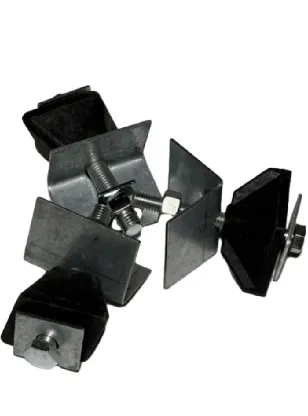loading...
- No. 9, Xingyuan South Street, Dongwaihuan Road, Zaoqiang County, Hengshui, Hebei, China
- admin@zjcomposites.com
- +86 15097380338
- Welcome to visit our website!
Exploring the Applications and Benefits of FRP Pultruded Sections in Modern Engineering
Understanding FRP Pultruded Sections A Sustainable Innovation in Modern Material Engineering
In recent years, the construction and manufacturing industries have increasingly turned their attention to sustainable materials that not only meet performance requirements but also contribute to environmental conservation. One such innovation is Fiber Reinforced Polymer (FRP) pultruded sections, which have emerged as a strong competitor to traditional materials such as steel and concrete. This article aims to explore the characteristics, advantages, and applications of FRP pultruded sections, highlighting their vital role in modern engineering.
What Are FRP Pultruded Sections?
FRP pultruded sections are composite materials created through the pultrusion process, which involves the pulling of resin-impregnated fibers through a heated die to shape and cure them into solid profiles. The main constituents of FRP are glass, carbon, or aramid fibers combined with a polymer matrix, typically epoxy, vinyl ester, or polyester. This combination offers a unique blend of strength, durability, and lightweight properties that make FRP sections particularly suitable for a wide range of applications.
Key Characteristics
1. High Strength-to-Weight Ratio One of the most significant advantages of FRP pultruded sections is their high strength-to-weight ratio. This property allows for reduced structural loads and more efficient design, which is particularly beneficial in applications where minimizing weight is crucial.
2. Corrosion Resistance Unlike traditional materials, FRP is highly resistant to corrosion and chemical degradation. This makes it an ideal choice for environments where exposure to harsh chemicals or marine conditions is a concern.
3. Low Thermal Conductivity FRP materials exhibit low thermal conductivity, providing natural insulation properties. This characteristic can contribute to energy efficiency in buildings and structures, reducing heating and cooling costs.
4. Design Flexibility FRP pultruded sections can be manufactured in various shapes, sizes, and colors, offering architects and engineers unprecedented design freedom. This versatility enhances aesthetic appeal while maintaining structural integrity.
frp pultruded sections

5. Sustainability As industries push towards more sustainable practices, FRP materials stand out because they can be produced with recycled fibers and resins. Furthermore, their longevity reduces the need for frequent replacements, thus minimizing waste.
Applications of FRP Pultruded Sections
FRP pultruded sections have found widespread application across various industries, including construction, transportation, and infrastructure. Some notable applications include
- Bridge Construction Due to their lightweight nature and high strength, FRP sections are increasingly utilized in bridge construction, helping to reduce maintenance costs and prolong lifespan.
- Industrial Structures Many factories and facilities take advantage of FRP's corrosion resistance in applications such as platforms, walkways, and support structures, particularly in environments where chemicals are present.
- Marine Applications The maritime industry benefits from FRP due to its resistance to salt and water damage, making it an ideal material for docks, piers, and boat components.
- Electrical and Telecommunications FRP is an excellent choice for non-conductive applications, such as electrical poles and enclosures, where the risk of corrosion or electrical hazards is a concern.
Conclusion
The adoption of FRP pultruded sections represents a paradigm shift in material engineering that prioritizes sustainability, performance, and design flexibility. As industries continue to seek efficient and environmentally friendly alternatives to traditional materials, FRP pultruded sections will likely find even broader applications and push the boundaries of what is possible in construction and manufacturing. By embracing this innovative material, engineers and builders can contribute significantly to a more sustainable future, paving the way for both structural integrity and ecological responsibility. The versatility, strength, and longevity of FRP make it a remarkable solution for the challenges of modern engineering.
-
GRP Structures: The Future of Lightweight, High-Performance EngineeringNewsJun.20,2025
-
FRP Water Tank: High-Performance Storage for Corrosive and Clean Water SystemsNewsJun.20,2025
-
FRP Square Tube: The New Industry Standard for Chemical and Structural ApplicationsNewsJun.20,2025
-
FRP Pultruded Profiles: The Ultimate Choice for Lightweight Structural StrengthNewsJun.20,2025
-
FRP Handrails: The Safer, Smarter, and Stronger Choice for Modern InfrastructureNewsJun.20,2025
-
FRP Grating: The Smart Solution for Durable, Lightweight Industrial FlooringNewsJun.20,2025
-
Why Choose a Galvanized Water Tank for Your Storage NeedsNewsMay.21,2025
